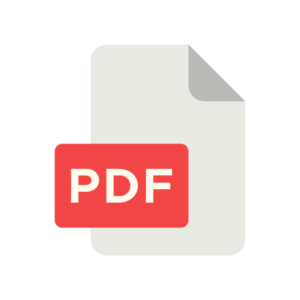
Received April 21, 2017; Accepted July 30, 2017; Published September 22, 2017
http://dx.doi.org/10.18081/2333-5106/015-04/289-294
Martin A. Meenakshi; Erik G. Seth; Michael Robbie
Abstract
Myocardial ischemia-reperfusion (I/R) injury remains one of the greatest unresolved therapeutic challenges in cardiovascular medicine. Several strategies that target various apoptosis pathways to limit myocardial infarct size have been researched, but none have been translated into effective therapy yet. Emerging evidence indicates that heparan sulfate proteoglycan expression in mitochondria of the infarcted heart and that inhibition of HSP70 expression increases mitochondrial ROS production and subsequent apoptosis. In this article, explain the cardioprotective mechanism of HSPs is reviewed, and the overexpression of HSPs in myocardial tissue of TAT-HSP70 transgenic mice showed myocardial protective effect on related research in myocardial ischemia. The protective effect of TAT-HSP70 in multiple organs for I/R injury is reviewed. In addition, atrial and endothelial phenotype changes in TAT-HSP70 prevent the development of pulmonary arterial hypertension (PH) and improve cardiopulmonary function in PH rat models. Intraperitoneal TAT-HSP70 exerted a direct cardioprotective effect in myocardial infarction in well-established mice and demonstrated that TAT-HSP70 is resistant to ischemia, increased energy production, and increased AMPK activity. TAT-HSP70 injection for 24 h also inhibited neutrophil infiltration of infarcts. Administering TAT-HSP70 (magnetic nanoparticle) conjugate 10 min before reperfusion increased efficacy, prevented local ischemic endothelial injury in patients with myocardial infarction, and reduced the incidence of reperfusion injury-related complications compared to placebo. In summary, the protective effect of TAT-HSP70 in myocardial I/R injury plays a role in subsequent studies and clinical applications.
Keywords: TAT-HSP70; Myocardial I/R injury; Heat shock response
References
1. Frangogiannis NG, Smith CW, Entman ML. The inflammatory response in myocardial infarction. Cardiovasc Res 2002;53:31–47. [PubMed]
2. Lindmark E, Diderholm E, Wallentin L, et al. Relationship between interleukin 6 and mortality in patients with unstable coronary artery disease: effects of an early invasive or non-invasive strategy. JAMA 2001;286:2107–13. [PubMed]
3. Bethke K, Staib F, Distler M, et al. Different efficiency of heat shock proteins (HSP) to activate human monocytes and dendritic cells: superiority of HSP60. J Immunol 2002;169:6141–8. [PubMed]
4. Asea A, Rehli M, Kabingu E, et al. Novel signal transduction pathway utilized by extracellular HSP70: role of toll-like receptor (TLR)2 and TLR4. J Biol Chem 2002;277:15028–34. [PubMed]
5. Williams RS, Benjamin IJ. Protective responses in the ischemic myocardium. J Clin Invest 2000;106:813–8. [PubMed]
6. Pockley AG. Heat shock proteins as regulators of the immune response. Lancet 2003;362:469–76. [PubMed]
7. Frantz S, Kobzik L, Kim Y-D, et al. Toll4 (TLR4) expression in cardiac myocytes in normal and failing myocardium. J Clin Invest 1999;104:271–80. [PubMed]
8. Heeschen C, Dimmeler S, Hamm CW, CAPTURE Study Investigators. Serum level of the antiinflammatory cytokine interleukin-10 is an important prognostic determinant in patients with acute coronary syndromes. Circulation 2003;107:2109–14. [PubMed]
9. Gerner C, Vejda S, Gelbmann D, et al. Concomitant determination of absolute values of cellular protein amounts, synthesis rates, and turnover rates by quantitative proteome profiling. Mol Cell Proteomics 2002;1:528–37. [PubMed]
10. Collinson PO, Stubbs PJ, Kessler AC. Multicentre evaluation of routine immunoassay of troponin T study. Multicentre evaluation of the diagnostic value of cardiac troponin T, CK-MB mass, and myoglobin for assessing patients with suspected acute coronary syndromes in routine clinical practice. Heart 2003;89:280–6. [PubMed]
11. Alpert JS, Thygesen K. Myocardial infarction redefined: a consensus document of The Joint European Society of Cardiology/American College of Cardiology Committee for the Redefinition of Myocardial Infarction. Eur Heart J 2000;21:1502–13. [PubMed]
12. Berberian PA, Myers W, Tytell M, et al. Immunohistochemical localization of heat shock protein-70 in normal-appearing and atherosclerotic specimens of human arteries. Am J Pathol 1990;136:71–80. [PubMed]
13. Schlesinger MJ. Heat shock proteins: the search for functions. J Cell Biol 1986;103(2):321–325. [PubMed]
14. Dienel GA, Kiessling M, Jacewicz M, Pulsinelli WA. Synthesis of heat shock proteins in rat brain cortex after transient ischemia. J Cereb Blood Flow Metab 1986;6(4):505–510. [PubMed]
15. Nagata K, Saga S, Yamada KM. Characterization of a novel transformation-sensitive heat-shock protein (HSP47) that binds to collagen. Biochem Biophys Res Commun. 1988;153(1):428–434. [PubMed]
16. Slimani H, Zhai Y, Yousif NG, Ao L, Zeng Q, Fullerton DA, Meng X. Enhanced monocyte chemoattractant protein-1 production in aging mice exaggerates cardiac depression during endotoxemia. Crit Care 2014;18(5):527. [PubMed]
17. Federation of American Societies for Experimental Biology. 72nd annual meeting. Las Vegas, Nevada, May 1-5, 1988. Abstracts of papers 7554-9037; T1-T9; M1-M170. Indexes of abstracts. FASEB J. 1988;2(6):A1597–A2232. [PubMed]
18. Prabhu SD. Cytokine-induced modulation of cardiac function. Circ Res 2004;95:1140–1153. [PubMed]
19. Kumar A, Haery C, Parrillo JE. Myocardial dysfunction in septic shock. Crit Care Clin 2000;16:251–287. [PubMed]
20. Mittal R, Coopersmith CM. Redefining the gut as the motor of critical illness. Trends Mol Med 2014;20:214–223. [PubMed] [Cross Ref]
21. Nishida K, Okinaga K, Miyazawa Y, Suzuki K, Tanaka M, Hatano M, Hirose A, Adachi M. Emergency abdominal surgery in patients aged 80 years and older. Surg Today 2000;30:22–27. [PubMed]
22. Ono S, Aosasa S, Tsujimoto H, Ueno C, Mochizuki H. Increased monocyte activation in elderly patients after surgical stress. Eur Surg Res 2001;33:33–38. [PubMed] [Cross Ref]
23. Hacham M, White RM, Argov S, Segal S, Apte RN. Interleukin-6 and interleukin-10 are expressed in organs of normal young and old mice. Eur Cytokine Netw 2004;15:37–46. [PubMed]
24. Zhou M, Wu R, Dong W, Leong J, Wang P. Accelerated apoptosis contributes to aging-related hyperinflammation in endotoxemia. Int J Mol Med 2010;25:929–935. [PubMed]
25. Wu R, Zhou M, Dong W, Ji Y, Miksa M, Marini CP, Ravikumar TS, Wang P. Ghrelin hyporesponsiveness contributes to age-related hyperinflammation in septic shock. Ann Surg 2009;250:126–133. [PubMed]


